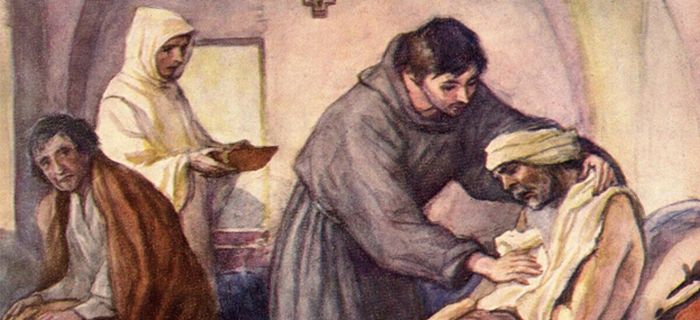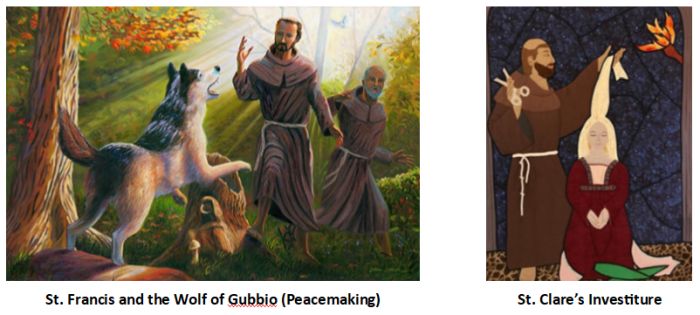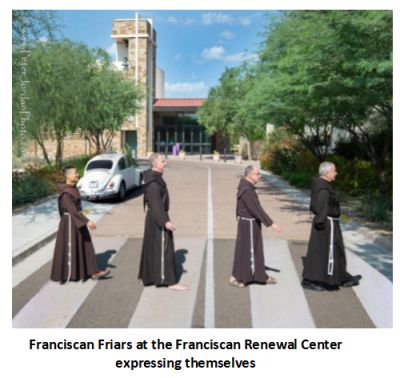 Black History Month provides another opportunity for us to understand the history, experiences, thoughts and feelings of our African American sisters and brothers. It encourages us to reflect on the past, but as importantly, on how we will participate in the creation of a more relationship-oriented and just future.
Black History Month provides another opportunity for us to understand the history, experiences, thoughts and feelings of our African American sisters and brothers. It encourages us to reflect on the past, but as importantly, on how we will participate in the creation of a more relationship-oriented and just future.
Sister Irma Dillard, RSCJ is a social activist dedicated to educating and empowering the voiceless to find their voices and take direct action for justice. She is a Change Management Consultant working with not-for-profits, unions, and parishes. She is a friend of the friars, a fan of the Franciscan movement, and has graciously agreed to share her reflection on Black History Month 2021.
Sister Irma’s Reflection on Black History Month 2021
1969 was a good year to be young, gifted and black!
Black History Month was first proposed by black educators and the Black United Students at Kent State University, Ohio in February 1969: a celebration of achievements by Black Americans and a time for recognizing the central role of African Americans in U.S history.
The 60’s were a very tumultuous time! The Black Power Movement (1966) was gaining momentum.
I chose not to attend another Catholic school. I attended a predominately black high school here in Northern California. It was there I was able to righteously be fully black— no need to assimilate.
In 1968, we walked out of classes and took over the administration building. Our demands: more Black teachers, Black administrators, Black Studies, and a library including books by Black and other authors of color. With pride, energy and determination we fought for legitimacy, authenticity, equality, freedom, justice and the right to an equal education. We spent 2 nights & 3 ½ days occupying that space during negotiations.
1969 was a good year. We read what was happening at Kent State. 90% of our demands were met. I knew it was time that we black folks be recognized for the achievements and contributions since our forced arrival in America— in mathematics, the sciences, literature, music, technology, etc. Our ancestors were more than just slaves! We were more than musicians and athletes! It was past time for us to be proud black people—unashamed and unapologetic!
“To Be Young Gifted and Black” hit the airways on KSOL and everyone began singing this powerful song. We sang it every single day. My high school WAS black history—the past brought to life and the continued making of history. Posters and quotes of black achievement decorated the halls and classrooms. We finally had a more accurate curriculum and because of Kent State we also celebrated Black History Month for the first time!
The sacred words of Nina Simone were alive:
To be young, gifted and black
Oh, what a lovely precious dream
To be young, gifted and black
Open your heart to what I mean
In the whole world you know
There are a million boys and girls
Who are young, gifted and black
And that’s a fact!
Black History Month! Black History is American History! It is World History!
Black History has to be incorporated fully into the American story!
______________________________________________________________________________________
Sister Irma Dillard, RSCJ is a social activist dedicated to educating and empowering the voiceless to find their voices and take direct action for justice. She is a Change Management Consultant working with not-for-profits, unions, and parishes. With degrees in psychology and counseling, religious studies, and communications, Sister Irma has spent 40 years working with youth and their families, including juvenile offender programs, single mothers’ support groups, and serving three San Francisco parishes doing staff development, diversity training, and facilitating staff and parish retreats. Sister Irma has been and continues to be with the people in the streets, participating in Black Lives Matter, DC Women’s March, Fight for $15, Poor People’s Campaign, Rise for Climate, People’s Townhall SF, DACA/Dreamers and No Ban, No Wall. She is a leader in her religious congregation’s reparations to the descendants of the estimated 150 persons enslaved by her religious order in Louisiana.
______________________________________________________________________________________
“To Be Young Gifted and Black” sung by Nina Simone and released in 1969. The song was also featured on her 1970 album Black Gold and was considered an anthem of the Civil Rights Movement. The title and opening line of the song come from Lorraine Hansberry’s autobiographical play, To Be Young, Gifted and Black: Lorraine Hansberry in Her Own Words, 1957. It is a play about the life of American writer Lorraine Hansberry, adapted from her own writings. Lorraine died in 1965 at the age of 34.
Nina then wrote the “To Be Young Gifted and Black” for children in memory of her late friend Lorraine Hansberry.
1976 Ford decreed Black History Month a national observance.
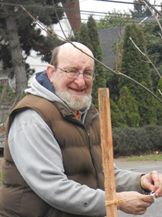 Brother Pat Groves O.F.M., is remembered by his brothers as a friar who followed the beat of his own drum. He was an artist, writer and musician known for his calm presence, gentle ways and dedicated service. After twenty-five years of being a friar, Pat decided to leave the friars but continued to live a life of simplicity. Twenty-five years later, Pat rejoined his brothers. He lived in the St Elizabeth friary and later at Old Mission San Luis Rey where he died in 2020. Below is a beautiful piece of music he created called, Lady Clare’s Farewell and a watercolor with an eastern influence. To see more of his art and writings, click on this link. http://www.patgroves.com
Brother Pat Groves O.F.M., is remembered by his brothers as a friar who followed the beat of his own drum. He was an artist, writer and musician known for his calm presence, gentle ways and dedicated service. After twenty-five years of being a friar, Pat decided to leave the friars but continued to live a life of simplicity. Twenty-five years later, Pat rejoined his brothers. He lived in the St Elizabeth friary and later at Old Mission San Luis Rey where he died in 2020. Below is a beautiful piece of music he created called, Lady Clare’s Farewell and a watercolor with an eastern influence. To see more of his art and writings, click on this link. http://www.patgroves.com
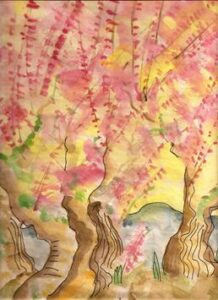
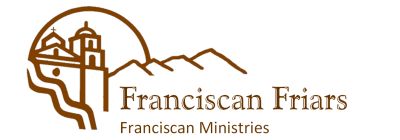




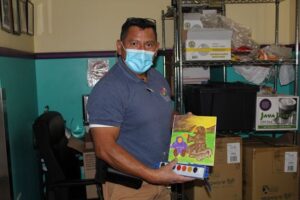 This month we feature the drawings of Farit Alvare. Farit is a security guard at St. Francis Center in Los Angeles. Originally from Peru, Farit says his art reflects his mood. “If I am happy, my art reflects that.” These drawings are submissions for a mural St. Francis Center is planning. Read the interview below to learn more about Farit.
This month we feature the drawings of Farit Alvare. Farit is a security guard at St. Francis Center in Los Angeles. Originally from Peru, Farit says his art reflects his mood. “If I am happy, my art reflects that.” These drawings are submissions for a mural St. Francis Center is planning. Read the interview below to learn more about Farit. Farit is not the only artist at St Francis Center. David Cho, a local LA Artist and guest of St. Francis Center is also artistically gifted. David has been an artist for 30 years. He works in many mediums including hand-drawing and digital art.
Farit is not the only artist at St Francis Center. David Cho, a local LA Artist and guest of St. Francis Center is also artistically gifted. David has been an artist for 30 years. He works in many mediums including hand-drawing and digital art.



 Black History Month provides another opportunity for us to understand the history, experiences, thoughts and feelings of our African American sisters and brothers. It encourages us to reflect on the past, but as importantly, on how we will participate in the creation of a more relationship-oriented and just future.
Black History Month provides another opportunity for us to understand the history, experiences, thoughts and feelings of our African American sisters and brothers. It encourages us to reflect on the past, but as importantly, on how we will participate in the creation of a more relationship-oriented and just future.
 Carol Sanger
Carol Sanger  When I knit a garment – for you, as an example – I think only of you. I consider how the color will look next to your skin, the shape that will flatter your figure, the ease of care. And I allow myself to be carried back to other garments I have made like that – for the boyfriend who didn’t last, my father who died, my granddaughter who will drag it around during her toddler years before giving it away.
When I knit a garment – for you, as an example – I think only of you. I consider how the color will look next to your skin, the shape that will flatter your figure, the ease of care. And I allow myself to be carried back to other garments I have made like that – for the boyfriend who didn’t last, my father who died, my granddaughter who will drag it around during her toddler years before giving it away. Last winter, I signed on to knit 50 8” x 8” squares as part of the Violet Protest, a collaborative knitting project of Phoenix artist Ann Morton. Fiber artists from all over the country are contributing their handmade squares using red and blue (symbols of differing ideologies) which from a distance pixilate to violet. Each square bears the name of the artist and a heartfelt intention focused on our core values as a nation: respect for the other, citizenship, compromise, compassion, creativity, candor, courage, compromise among among others. The Phoenix Art Museum will display them this Spring before going to Washington DC where 50 squares will be hand delivered to each member of the House and Senate. Do the math – yup, 26,750 squares!
Last winter, I signed on to knit 50 8” x 8” squares as part of the Violet Protest, a collaborative knitting project of Phoenix artist Ann Morton. Fiber artists from all over the country are contributing their handmade squares using red and blue (symbols of differing ideologies) which from a distance pixilate to violet. Each square bears the name of the artist and a heartfelt intention focused on our core values as a nation: respect for the other, citizenship, compromise, compassion, creativity, candor, courage, compromise among among others. The Phoenix Art Museum will display them this Spring before going to Washington DC where 50 squares will be hand delivered to each member of the House and Senate. Do the math – yup, 26,750 squares!  This is one of the ways knitting connects me to knitters and crocheters around the world. (Knitters use 2 needles, crocheters use 1 hook.) We are one body not bound by culture or politics, but by this other thing we do. I want my life to be useful. I want my love for this world to have physical form. Looping stitches through stitches to become fabric to hold my love for its intended – family, friend or stranger – until the day comes when the sweater or afghan cradles the old bones of an old dog and all that love spills freely out into the world.
This is one of the ways knitting connects me to knitters and crocheters around the world. (Knitters use 2 needles, crocheters use 1 hook.) We are one body not bound by culture or politics, but by this other thing we do. I want my life to be useful. I want my love for this world to have physical form. Looping stitches through stitches to become fabric to hold my love for its intended – family, friend or stranger – until the day comes when the sweater or afghan cradles the old bones of an old dog and all that love spills freely out into the world.

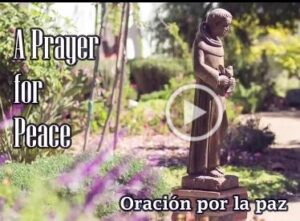
 Meet George Dooley!
Meet George Dooley!


